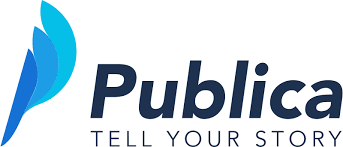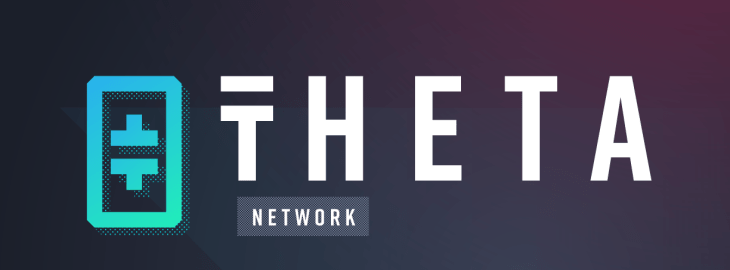Take a deep breath. Just as our traditional financial, political, legal, and social institutions weren’t molded and refined overnight, neither will cryptocurrency and blockchain technology. It’s a process, one that’s bound to suffer market swings, malicious attacks, and regulatory uncertainty. Take one more breath.
The cold reality is that you aren’t going to have someone sitting behind you as you invest and trade, patting you on the back every time you make the most game theory optimal (GTO) investment decision.
However, you can take solace in the fact that the crypto market is one of information, and as long as you are actively striving to dig deeper into projects and executing the best decisions you can with the information you have available at the time, then there’s not much more you can do.
Although the market is down, there’s still an opportunity to learn and align yourself with projects that you feel fill a sizeable gap in present day society. And remember, even Fahmi Quadir had to run the gauntlet after she famously shorted Valeant Pharmaceuticals. Well researched and calculated decisions aren’t always immediately rewarded, and sometimes they aren’t rewarded at all. However, it’s part of the game.
Below are 7 altcoins and projects that we think have fundamentally sound objectives, are tackling gargantuan and highly flawed industries, and have enjoyed tangible and proven success within the crypto-space, making them ripe for a billion dollar market cap once the market trends towards organic and steady growth.
Disclaimer: This article is intended to be an introduction to projects you may have not otherwise heard of. When investing in cryptocurrencies and blockchain projects, it’s important to do your own research. Additionally, this should not be taken as investment advice, and the below projects are not ranked in any specific order.
1. Basic Attention Token ($BAT) – $250 Million
![]()
Basic Attention Token Project Breakdown
Based on the Ethereum blockchain and targeting the highly fragmented, invasive, and opaque digital advertising industry, Basic Attention Token is a decentralized, transparent digital ad exchange literally quantifying and rewarding a website user’s attention span in the form of the BAT token.
Basic Attention Token compensates users of the Brave Browser—a fast, open source privacy browser that blocks third-party trackers and ads—by tracking user attention and engagement with advertising and attention-based services, cutting out unnecessary and costly traditional middlemen and resulting in:
- Heightened user privacy, decreased susceptibility to malware, and fewer targeted advertisements
- Increased conversions, less fraud, and less expensive customer attention for advertisers
- Higher yield for content publishers
Simply put, BAT’s interactive browser is placing never-before recognized value on publisher content by enabling genuine feedback mechanisms and the removal of a complex network of advertisement intermediaries, ultimately tightening up (or cutting the fat) of today’s digital advertising ecosystem and thus allowing users, publishers, and advertisers to get more bang for their buck, so to speak.
Why BAT Could Join the Billion Dollar Club
At the beginning of 2018, the Brave Browser surpassed 1 million monthly active users on their browser (MAUs), and has since doubled to more than 2.2 million MAUs as of June 2018—averaging roughly a 13% growth rate per month.
Add in several partnerships with two of the world’s largest YouTube creators (Philip DeFranco and Bart Baker)—who have recognized that the revenue-draining middlemen and practices have become unsustainable for online content creators and publishers—and the Dow Jones Media Group, and Brave is positioning itself as a tangible answer to today’s highly invasive digital advertising practices.
If you’re wondering how BAT factors in, remember that the Basic Attention Token is effectively the fuel on which the Brave network runs (rewarding users for engaging with ads and content creators for displaying ads), so once the foundation has ironed out the necessary kinks, it’s only a matter of time before a self-sustaining ecosystem for Internet users, advertisers, and publishers is realized.
Furthermore, the Brave Browser’s most recent release of their latest desktop browser, Brave 0.23, now allows users to browse via private tabs thanks to Tor network integration—a free and open network which guards against online traffic analysis and surveillance by ISPs, guest Wi-Fi providers, and browsed sites. And, coming off some of the most egregious systemic privacy failings and unbridled collections of personally identifiable information in history, it’s not unfathomable to think we could be seeing a large-scale shift towards private browsing and a true opting out of SPI collection.
At the time of writing, BAT’s price sits at US$0.25 or 3,790 Satoshis.
If you’d like to see what else Basic Attention Token has in store for Q3 and Q4 of 2018, you can check out their roadmap here. And, for a more complete look at the project and its community, here’s their website, whitepaper, Twitter, Facebook, Telegram, and Reddit.
Finally, for those interested in learning about the tangible benefits associated with the Brave browser, our “What is Basic Attention Token” details the number of intrusive ads and trackers blocked and browsing time saved over a one-month span. Note that in order to get started with the Brave Browser, it is not a requisite that you purchase Basic Attention Token.
2. Neblio ($NEBL) – $58 Million

Neblio Project Breakdown
Tackling the most significant obstacle slowing enterprise integration onto the blockchain—the difficulty of deploying blockchain networks, developing distributed applications, and packaging them into an internally and externally manageable body—Neblio is an open-source, next generation blockchain platform for business solutions.
At present, businesses looking to integrate onto the blockchain are left in limbo, longing for mature, customized tool sets, robust developer ecosystems, and pre-packaged deployment platforms to assist in the overhaul of traditional legacy database architectures which they’ve relied on for far too long.
Specifically, Neblio is taking blockchain into the next generation by simplifying the development and deployment of distributed applications for businesses looking to add exponential value through scalable, immutable, reliable, and secure blockchain technology, and supports:
- Distributed API networks in 8 popular programming languages (Python, JS, .NET, Objective-C, Java, Node.Js, GO, PHP) — allowing developers to interact with the Neblio network without actually needing extensive familiarity with blockchain technology
- Enterprise records management
- Secure identity management
- Blockchain consulting — to assist customers in their deployment of blockchain consulting
Simply put, Neblio’s turnkey blockchain business solutions are bringing blockchain to the masses, and are allowing businesses to hit the ground running via a “quick and painless” blockchain toolbox.
Why NEBL Could Join the Billion Dollar Club
With the time, cost, and overall know-how required to integrate enterprise onto the blockchain, it’s safe to say the overwhelming majority is not going to develop their own customized blockchain platform and hire highly experienced blockchain developers to make such a reality. Instead, they will be looking to incorporate preexisting foundational building blocks and customizable solutions to jumpstart their foray into blockchain.
Neblio platform users are able to issue their own NTP1 token in just two clicks, and can be used by enterprises for:
- Employee identity management
- Asset tracking
- Records management
- Events tickets
- In their very own token sale
For example, NTP1 tokens on the Neblio blockchain representing event tickets, could include vital metadata identifying seating information, while tokens representing enterprise assets could include such metadata representing asset description, value, and current custodian.
Coupled with a recent partnership with Kind Ads—a blockchain advertising platform without middleman fees—businesses utilizing Neblio are now able to promote their project in a cost effective way.
Neblio is also one of the few projects who first decided on nailing down their basic product before making an all too common marketing push, and now, with 8 NTP1-based projects in respective stages of launch, over 45 NTP1 tokens created, and a desktop wallet that has been downloaded more than 40,000 times, Neblio is undertaking an aggressive marketing campaign to expand reach.
For blockchain’s mass adoption, simplicity is key and Neblio does just that.
At the time of writing, NEBL’s price according to Coinmarketcap is US$4.43 or 67,112 Satoshis.
To read up on NEBL further, check out their website here, along with their whitepaper, roadmap, and social media channels (Telegram, Twitter, Reddit).
Still unconvinced? Here are several of the above points expanded upon in our piece 5 Reasons to Keep an Eye on Neblio. And, for those curious about staking NEBL for passive income, check out our beginner’s guide to staking NEBL.
3. VibeHub ($VIBE) – $16 Million

VibeHub Project Breakdown
Imagine purchasing a front-row seat to a Paul McCartney concert thousands of miles away, or taking private cello lessons from a world renowned cellist from the comfort of your couch, or even slugging it out at the boxing gym without ever having to step foot in the ring. Cue VibeHub, a virtual and augmented reality platform and marketplace utilizing volumetric video holoportation technology and the Ethereum blockchain to realize the sale, sharing, and purchase of experiences with VIBE tokens.
Experiences which would otherwise be no more than a wild dream.
And, if you think VibeHub’s reach extends only so far as the role of a virtual reality spectator, you’re dead wrong. VibeHub isn’t just creating a mere platform for remote visual stimulation, they’re creating a community driven world—where users can meet and interact with friends, instructors, and artists via real-time voice communication.
VibeHub is utilizing holograms of educators, artists, and instructors, scaling them to size (as small as a butterfly or in life-sized form), and placing everyday persons into custom VR environments, ultimately connecting millions of viewers to a never-before-realized, fully immersive social experience.
Why VIBE Could Join the Billion Dollar Club
It’s no surprise the push to digitize experiences is at an all time high at the moment, and companies such as Microsoft, Facebook, Apple, and IBM have already invested billions of dollars into virtual reality research. Combined with an estimated $25 billion concert industry—one that confines artists to an attendance maximum for live shows—and VR stands to “astronomically monetize” it, now allowing the Ed Sheerans and Beyonces of the world to increase their live attendance by potentially millions or cut out costly touring and booking costs altogether.
In March 2018, VibeHub reached a multi-million dollar agreement with 8i—a leader in volumetric video technology—granting them access to 8i’s video production facility (one that has already produced hundreds of volumetric videos and images over past several years). Access (followed by ultimate acquisition after 18 months) of 8i’s production facility has allowed VibeHub to save thousands of dollars per minute of hologram capture time, an essential for their roadmap which is aiming to push out over one hundred captures by the end of 2018—captures ranging from artists, to educators, to comedians, to public figures, and more.
Several notable figures VibeHub has captured within the last three months include famed poker player Phil Hellmuth Jr. and Internet celebrity Lexy Panterra.
At the time of writing, VIBE is trading at US$0.08 or 1,241 Satoshis.
If you’d like to learn more about VibeHub and how their crypto-based holoportation platform and augmented reality marketplace is bringing value to the $25 billion concert business and VR industry, check out their website, whitepaper, and social media channels (Facebook, Twitter, Telegram, Reddit).
Interested in other virtual reality projects incorporating blockchain technology? Check out our article on 5 projects combining VR and blockchain.
4. Power Ledger ($POWR) – $107 Million

Power Ledger Project Breakdown
Based on the Ethereum blockchain and headquartered out of a country where more than 1 in 5 households have solar panels installed on their roofs (Australia), Power Ledger is a leading P2P marketplace and ecosystem for the purchase and sale of renewable energy, enabling the interoperability between manifold market pricing and management mechanisms and units of electricity (kWh) by way of a dual token ecosystem (POWR and Sparkz).
Think of Sparkz as the exchangeable trading token for the purchase and sale of energy and POWR as the fuel of the entire ecosystem.
Just as Airbnb and Uber allow people to monetize spare rooms and cars, Power Ledger is bringing value to consumers wanting to realize value in their excess distributed energy resources (DER) via a trustless, low-cost, convenient, and transparent trading platform.
Power Ledger’s trustless and distributed trading platform cuts out the centralized and bureaucratic settlement and reconciliation of millions of transactions—across hundreds of thousands of traders—making it possible to facilitate financial settlements of energy transactions at never-before-realized speeds, while shifting the transactive economy from a bilateral to multilateral ecosystem. This ultimately preserves consumer interest and protection.
Furthermore, Power Ledger supports an increasing number of energy trading applications, such as:
- Neo-retailer smart demand and supply management
- Electricity metering, micro-transactions, and big data acquisition
- Low-cost transparent data aggregation reconciliation and optimization
- Autonomous asset management
Why POWR Could Join the Billion Dollar Club
With hundreds of millions of people having attained access to modern energy over the last twenty years thanks to distribution networks (primarily in India and China) more people than ever are now reliant and connected to an increasing stationary network of electricity entities, ultimately creating an enormous appetite and need for sustainable and innovative P2P transaction platforms. And that’s just in terms of stationary electricity consumers (buildings, factories, apartments, and houses).
Globally, 2015 saw over 1.26 million electric vehicles take to the road, with over 1.45 million charging points, ultimately highlighting another core aspect of the energy sector in need of overhaul and affordable and clean sourced energy.
Power Ledger has already been around for over two years, celebrating its second birthday in May of 2018, and in that time has achieved palpable success in the blockchain and energy space. Below are just a few of the core highlights of their two-year tenure.
- Australian blockchain trial – Power Ledger’s pilot project with the National Lifestyle Villages (NLV) connected 15 dwellings to the blockchain, ultimately giving way to a community energy marketplace.
- First international deployment – Began a trial with New Zealand DSO Vector Limited across 500 sites, enabling New Zealand residents to buy and sell power without interference of a centralized electricity retailer.
- Real-time fiat exchange – Secured a financial channel authorizing the direct exchange of fiat and Sparkz, clearing the largest barrier facing P2P energy trading.
- Commercial deployment – Began commercial operations in White Gum Valley (Australia) by deploying distributed ledger technology for electricity trading. And, in Q1 2018, they partnered with Greenwood Solutions to deploy the first commercial P2P platform in Melbourne.
- LISD, Thailand, and Japan partnership – Partnered with the Liechtenstein Institute for Strategic Development (LISD) to support the development of low-cost distributed energy markets in Europe. Power Ledger also partnered with Thai-government backed renewable energy developer BCPG to bring P2P renewable energy to Thailand and Japan’s second-largest electricity utility, Kansai Electric.
You can read up further on Power Ledger’s accomplishments in the last two years in this Medium post.
At the time of writing, POWR is listed at US$0.28 or 4,336 Satoshis on Coinmarketcap.
To read more about Power Ledger, their numerous partnerships, and the flaws of traditional renewable energy marketplaces, check out their website, whitepaper, and social media channels (Facebook, Reddit, Twitter, Telegram).
And, if you’re looking to read up on the role of digital tokens in blockchain and energy, check out this article featuring 5 energy projects in today’s cryptosphere.
5. Publica ($PBL) – $1.8 Million

Publica Project Breakdown
Leveraging blockchain technology to ease the ambiguities, distribution process, and exorbitant costs of the modern-day publishing industry, Publica is a decentralized publishing platform for authors and publishers, allowing anyone to fund, sell, and distribute literary works.
Publica views themselves as the 21st century reinvention of Gutenberg’s printing press, ensuring literary immutability while delineating clear proprietary rights and leveling the playing field for anyone looking to publish and distribute their book.
Publica’s decentralized protocol and pre-constructed toolkit of necessary publication resources benefits authors by authorizing:
- Direct and immediate payments and publication control – reader to author, buyer to seller
- Accessible marketing and promotional channels
- Transparent sales ledgers
- Diverse and creative business models – crowdfundings, non-profits, scholastic, pay-as-you-read
- Censorship resistance and tampering – via decentralized storage
However, it’s not just authors who Publica benefits, but also readers and publishers. As Publica enables direct payments for authors, unnecessary and costly publishing intermediaries are eliminated, resulting in lower-priced books (including e-books) along with potential secondary markets. Authors are now able to print-on-demand, while foregoing wasteful, traditional large print runs and warehousing.
Some publishers also benefit from this shake-up of the status quo by enjoying a more direct hand in the publication, editorial, illustration, and review process, coupled with the ability to skirt end user license agreements (in some cases) and decreased dissemination of goodwill and other business secrets (e.g., negotiated prices with storefronts).
Why PBL Could Join the Billion Dollar Club
In an industry stricken with uncertainty (irregular traffic sources, minimal profit margins, and out-of-date marketing techniques), Publica offers a unique and modern solution to fundamental publishing inadequacies by placing the publishing process back in the hands of the author. In cases where an author’s work takes off and generates substantial revenue, why wouldn’t they want to enjoy most of the profit instead of handing it over to big publishing houses?
As such, Publica has been dubbed an “author-centric money model,” one that’s set to spur increased content creation and literary dissemination.
Although it might seem natural to dismiss Publica as serving a “niche market,” that “niche market” is estimated to surpass over $120 billion by 2020, with e-book revenue alone set to generate nearly $20 billion in revenue by the end of 2018. For reference, there were over 266 million e-books sold in 2017.
Additionally, the integration of the publishing industry onto the blockchain ensures a more honest and transparent ecosystem, one where online reviews are tracked and held accountable through the PBL token.
At the time of writing, Publica is priced at US$0.10 or 1,530 Satoshis.
If you’d like to read up further on Publica, what a book ICO is, and its benefits, check out their website, whitepaper, and various social media channels (Reddit, Twitter, Facebook, Telegram).
6. Ambrosus ($AMB) – $46 Million

Ambrosus Project Breakdown
Constructing an end-to-end blockchain-based ecosystem for supply chains, Ambrosus is doing so through the integration of IoT sensors, distributed ledgers, and databases, ultimately optimizing inefficient supply chain and quality assurance processes for life-essential products—namely, food and medicine (two industries plagued by haphazard handling practices, easy spoilage, and time-sensitive transport).
Think of Ambrosus as the Bob Ross of supply chain integration onto the blockchain, as it paints a clear picture from start (the assembly process) all the way to the finish (distribution) of a product’s life-cycle via hardware, software, developer tools, and a protocol layer. But how?
Ambrosus tracks all products through cryptographically-enforced, time, temperature, logistical, and material stamping and data transmission by way of the world’s first data-bonded token, the Amber token.
The result? High-integrity analytics for realizing peak supply chain inefficiencies (concerning origin, quality, compliance, and handling), and more importantly, a frictionless dialogue between supply chain participants.
Additionally, Ambrosus integrates sophisticated anti-tampering and anti-counterfeiting measures via cryptographically encrypted tags—all with their own unique, immutable digital identity. Note that the Ambrosus protocol may be applied to virtually any complex supply chain process.
Why AMB Could Join the Billion Dollar Club
In the case of highly complex supply chain processes, fraud, negligence, and other malicious threats and actors have unfortunately become all too prevalent, preventing enterprises from identifying the correct root of problems and inefficiencies in a timely manner. Look no further than the infamous 2008 Chinese milk scandal, India’s 2015 lead instant noodle finding, and 2013 horse meat contamination. Post-2008 Chinese milk scandal, local Chinese dairy producers were effectively crippled, leading to the industry being outsourced altogether.
It’s clear that consumer distrust is at an all-time high and people are rightfully demanding our food production and pharmaceutical processes be not only verifiable, but honest. Ambrosus provides and requires both.
At the Crypto Valley Conference in June 2018, Ambrosus rolled out their new sensor, one that tracks temperature, pressure, shock, and location, a necessary and tactile step towards claiming their due piece in the estimated $40 trillion global supply chain industry.
Not to mention, they recently joined Swiss Food Research—a leading network in Switzerland connecting innovative scientific projects to agricultural supply chains—and partnered with the Swiss Coffee Alliance. To understand the magnitude of this, know that the global coffee market is an estimated $81 billion dollar industry and has been at the heart of contention over highly unethical cultivation and distribution practices for decades (if not longer).
Ambrosus is currently listed at US$0.32 or 4,893 Satoshis.
To read up further on Ambrosus use cases and the power of IoT sensors coupled with smart contracts, check out their website, whitepaper, roadmap, and social media channels (Twitter, Facebook, Telegram, Reddit).
Finally, if you’re looking for an interesting video on how Ambrosus is overhauling the baby food industry through origination transparency and quality assurance, check out this video.
7. Theta Token ($THETA) – $109 Million

Theta Token Project Breakdown
Set to disrupt 2018’s online video industry in a similar way to how YouTube redefined our traditional video standards and viewing back in 2005, the Theta Network is leveraging blockchain technology to create the first decentralized video streaming and delivery network. Formed by bandwidth and memory resources contributed by viewers—in exchange for THETA tokens—the Theta Network might be more aptly named the “World’s Cache,” as it provides:
- End-to-end video streaming infrastructure
- Incentivized rewards for viewers acting as “caching nodes”
- Increased stream quality coupled with reduced streaming costs
- Support of vertical dapps for movies, education, e-sports, enterprise conferencing, entertainment, and more
Theta’s building a sustainable streaming ecosystem where advertisers can fund ad campaigns with tokens in support of streaming websites, influencers, and viewers, and in turn, viewers engage with those ads—reaping the reward in the form of tokens, which can then be gifted back to content creators and influencers.
The result? Higher quality content delivery networks for viewers, more efficient advertising campaigns for advertisers, and innovative, unique, and fiscally worthwhile business models for both content creators and publishers.
Why THETA Could Join the Billion Dollar Club
In 2016, Theta launched a live streaming platform Sliver.tv, which reached an all-time high of just over 5 million users in March 2018, and has since become one of the biggest titans in the e-sports entertainment arena. Sliver.tv raised over $17 million in venture financing from several well-known Silicon Valley VCs, including Danhua Capital, Sierra Ventures, and DCM.
Note that live video streaming accounts for over two-thirds of all Internet traffic, and is expected to reach roughly 82% of all traffic by 2020—with the total video streaming market estimated to reach over $70 billion by 2021. Moreover, a 2017 SuperData research report placed the combined audience of video game content on Youtube and Twitch at over 665 million users—more than twice the size of the U.S. population. Such a user base is nearly three times the combined viewership of HBO and Netflix.
Theta also recently launched their testnet with Sliver.tv integration, along with a $2 million development fund to encourage the building of dapps on the network. This release is a key step in pushing Theta towards legitimately:
- Taking on traditional content studios and gatekeepers
- Eliminating third-party advertisers
- Making subscription-based services obsolete
Keep in mind, at the time of writing, Theta is listed on Coinmarketcap at US$0.16 or 2,485 Satoshis.
To read up further on Theta and its integration with the Sliver.tv platform, check out their website, whitepaper, roadmap, and social media channels (Twitter, Facebook, Telegram, Reddit).
Final Thoughts
Whether you’re unable to make the trip to Madison Square Garden to see a sold-out Sam Smith concert, are looking to cut down on wasteful and invasive Internet browsing, or are striving to give your business a competitive edge in the market and secure essential data with an immutable ledger, the above 7 projects are all worth keeping an eye on during this bear market, as they’ve already taken actionable and tangible steps towards overhauling their respective industries—a rarity in today’s cryptosphere and blockchain ecosystem.
Just remember, traditional institutional infrastructures were not built overnight, and blockchain is no different. How long the refinement process will take, it’s hard to say. However, as long as you surround yourself with projects you think are tackling realizable and needed overhauls—and which have relevance and utility in your life—you can sleep easy.
We’re interested to hear your favorite project of the above 7, if you think we should have included a different project, or any other upcoming coins and projects you think have the potential to reach a billion dollar market cap (and haven’t already at one point or another in time). Let us know in the comments!
Related: 10 Sub-100 Million Market Cap Cryptocurrencies to Watch in 2018
Download the Brave Browser.

